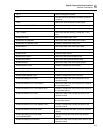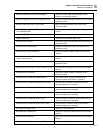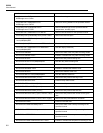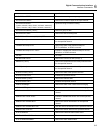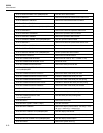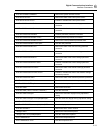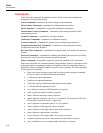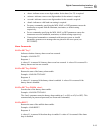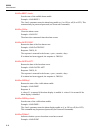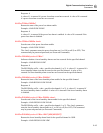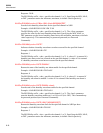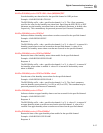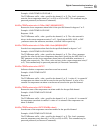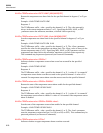
Digital Communications Interface
Commands 6
6-13
• <hour> indicates a one or two digit number for the hour (0 to 23) is required.
• <minute> indicates a one or two digit number for the minute is required.
• <second> indicates a one or two digit number for the second is required.
• <baud> indicates a valid baud rate setting is required.
• For query commands, specifying the MIN, MAX, or DEF parameter causes the
instrument to respond with the minimum, maximum, or default setting
respectively.
• For set commands, specifying the MIN, MAX, or DEF parameters causes the
instrument to use the minimum, maximum, or default setting respectively.
• Unrecognized commands or commands with incorrect syntax or invalid
parameters generate error messages that are placed in the error queue (see
SYST:ERR?).
Alarm Commands
ALARm:BATTery?
Indicates whether a battery alarm event has occurred.
Example: ALAR:BATT?
Response: 1
A value of 1 is returned if a battery alarm event has occurred. A value of 0 is returned if a
battery alarm event has not occurred.
ALARm:BATTery:ENABle?
Returns the state of the battery alarm enable.
Example: ALAR:BATT:ENAB?
Response: 0
A value of 1 is returned if the battery alarm is enabled. A value of 0 is returned if the
battery alarm is disabled.
ALARm:BATTery:ENABle <bool>
Sets the state of the battery alarm enable.
Example: ALAR:BATT:ENAB 1
The <bool> parameter turns the battery alarm enable on (1 or ON) or off (0 or OFF). This
command may be password protected (see Password Commands).
ALARm:BEEP?
Returns the state of the audible alarm enable.
Example: ALAR:BEEP?
Response: 0
A value of 1 is returned if the alarm beep is enabled. A value of 0 is returned if the alarm
beep is disabled.



